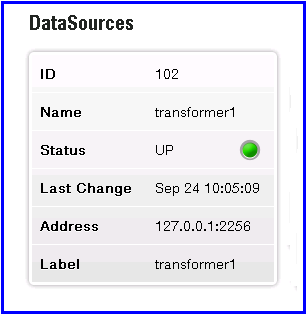Troubleshooting the Deployment Framework
This page describes the basic checks you should perform when troubleshooting the Deployment Framework.
Basic checks
To check that the basic Deployment Framework containing Liberator and Transformer has been installed correctly:
-
Run the
dfw versionscommand to check that expected components are deployed and expected blades are active:$ ./dfw versions Deployment Framework 7.1.2-31326-bbafa80 Core components Version --------------------------------------------------------------------- Liberator 7.1.31-142175-37823e35 Transformer 7.1.18-127390-6b3bc77e Deployed blades Version State --------------------------------------------------------------------- BlotterExport 7.1.31-142175-37823e35 Inactive DemoDataSourceLatency 7.1.31-142175-37823e35 Inactive DirectConnection 7.1.31-142175-37823e35 Active DirectSSLConnection 7.1.31-142175-37823e35 Inactive HTTP 7.1.31-142175-37823e35 Active HTTPS 7.1.31-142175-37823e35 Inactive JavaOpenPermissioning 7.1.31-142175-37823e35 Inactive LiberatorDemoDataSource 7.1.31-142175-37823e35 Inactive LiberatorDemoDataSourceDiscovery 7.1.31-142175-37823e35 Inactive LiberatorDiscovery 7.1.31-142175-37823e35 Inactive LiberatorJMX 7.1.31-142175-37823e35 Inactive LiberatorSockmon 7.1.31-142175-37823e35 Inactive LiberatorWebsite 7.1.31-142175-37823e35 Active MinimalLiberatorWebsite 7.1.31-142175-37823e35 Inactive OpenPermissioning 7.1.31-142175-37823e35 Active ServerIdentification 7.1.31-142175-37823e35 Active TokenPermissioning 7.1.31-142175-37823e35 Inactive PersistenceService 7.1.18-127390-6b3bc77e Inactive PersistenceServiceClient 7.1.18-127390-6b3bc77e Inactive PersistenceServiceClientDiscovery 7.1.18-127390-6b3bc77e Inactive TransformerDemoDataSource 7.1.18-127390-6b3bc77e Inactive TransformerDemoDataSourceDiscovery 7.1.18-127390-6b3bc77e Inactive TransformerDiscovery 7.1.18-127390-6b3bc77e Inactive TransformerDiscoverySystemInfo 7.1.18-127390-6b3bc77e Inactive TransformerJMX 7.1.18-127390-6b3bc77e Inactive TransformerSockmon 7.1.18-127390-6b3bc77e Inactive TransformerSystemInfo 7.1.18-127390-6b3bc77e Inactive TransformerToLiberatorConnection 7.1.18-127390-6b3bc77e Active TransformerToLiberatorSSLConnection 7.1.18-127390-6b3bc77e Inactive -
Run the
dfw startcommand to start components on the host:$ ./dfw start Blades ok Starting Liberator: rttpd: License will expire on Wed Apr 1 01:00:00 2020 -
Run the
dfw statuscommand to see which components are running on the host:$ ./dfw status Core components Status Process ID ------------------------------------------------------------- Liberator Running 32649 Deployed Adapter blades Status Process ID ------------------------------------------------------------- -
If Liberator is running on the host, open a web browser and navigate to the Liberator status web page.
The Liberator status web page requires the following feature blades to be active: HTTP (or HTTPS) and LiberatorWebsite (see Installing Liberator). To check which port Liberator’s HTTP or HTTPS interface is running on, run the
dfw infocommand.Use the status page to check that Transformer and other DataSource peers of Liberator are active and connected.

Blade checks
Once the basic Deployment Framework is up and running, deploy your required blades. The best way to check that a particular blade is correctly deployed and configured is to start the Caplin Platform Deployment Framework and verify that the feature the blade provides is available.
If your Adapter blade doesn’t appear to be running, or can’t be seen by the Transformer or Liberator:
-
For a Java-based blade, ensure that the Java environment settings are correctly defined on the machine(s) where the blade runs.
-
Check that the blade’s server hostname has been defined correctly (see Change server hostnames in Change server-specific configuration).
| If you have problems with the basic installation, or with any blades supplied by Caplin Systems, contact Caplin Support. |